Apple iPhone 4S: Thoroughly Reviewed
by Anand Lal Shimpi & Brian Klug on October 31, 2011 7:45 PM EST- Posted in
- Smartphones
- Apple
- Mobile
- iPhone
- iPhone 4S
History loves to repeat itself, and even Apple isn’t immune to the yearly cycle of rumor and release. Leading to each year’s iPhone refresh, excitement, rumors, and hype build to a fever pitch, features and designs are added into an increasingly unrealistic combination, and finally everyone is silenced at the device’s eventual unveiling.
Today we’re looking at Apple’s latest iPhone refresh, the iPhone 4S (henceforth just 4S).
The review has to start somewhere, and the path of least resistance is usually just exterior appearances - in this case the 4S is easy to go over. The 4S keeps the overall form factor and design of its predecessor, but to call it identical to the iPhone 4 isn’t entirely correct. Instead, the 4S borrows its stainless steel band break locations from the CDMA iPhone 4, which we talked about extensively when it finally released. The GSM/UMTS iPhone 4 previously had three notches, where the CDMA iPhone 4 and 4S have a total of four.
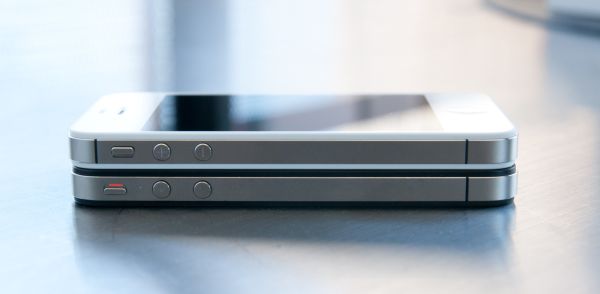
Top: iPhone 4S, Bottom: iPhone 4
The long and short of this change is that the notches have been moved around to accommodate a design with two cellular antennas. One is up at the very top, the other is at the very bottom - the two are the small U shaped portions. The result of this change is that the 4S has a very symmetrical design, as opposed to the GSM/UMTS 4’s asymmetric layout.
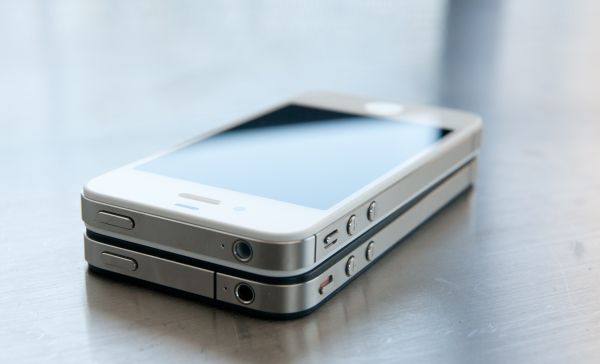 Top: iPhone 4S, Bottom: iPhone 4
Top: iPhone 4S, Bottom: iPhone 4
Just like the CDMA iPhone 4, the 4S also moves the vibrate/lock switch down the device just slightly to accommodate the new break for the top antenna band. This is the physical change that breaks compatibility with cases designed for the older GSM/UMTS iPhone 4. If you recall previously, however, Apple refreshed its bumpers with a new “Universal” line around the time of the CDMA iPhone 4 launch. At that time, case makers also followed suit with a larger vibrate/lock switch port. The result is that if you have a “universal” case created after the launch of the CDMA iPhone 4, you likely won’t need a new one for the 4S.
I say likely because some cases that cover the front of the 4S and are universal might not work as well owing to a small change in the placement of the 4S’ ambient light sensor. It’s going to be a case by case basis to determine which 4 cases that cover the front of the display work with the 4S.
The rest of the 4S exterior is superficially identical to its predecessor, which has become something of a point of contention for shoppers who like being able to identify themselves as owning a 4S, as opposed to a 4. There are, however, subtle differences you can leverage to tell the 4S from its two 4 brethren. The 4S includes the regulatory (FCC, recycling, European Conformity, e.t.c.) logos below its model numbers and FCC ID. The CDMA 4 doesn’t include those logos. Again, the GSM/UMTS 4 is alone with its three-notch stainless steel bands. It is admittedly curious that Apple hasn’t decided to make some other larger change to distinguish the 4S from the other two - there’s no mention of 4S anywhere on the phone. The iPhone 3G and 3GS were famously distinguished from each other by the inclusion of chrome iconography on the back. I fully expect Apple to update their identifying iPhone page with basically the above information at some point in time, but to say that the 4S is identical to the previous device is disingenuous.
The 4S design is without a doubt, however, an evolution of the CDMA iPhone 4’s design. Like the latter, the 4S includes the same improved vibration unit instead of the counterweight vibrator that most smartphones include. The result is a virtually silent, completely smooth vibrate, instead of the louder rattle and sharp acceleration that accompanies the counterweight vibration. The result is much less conversation-interrupting noise when the 4S vibrates during a call, and less intrusive notification.
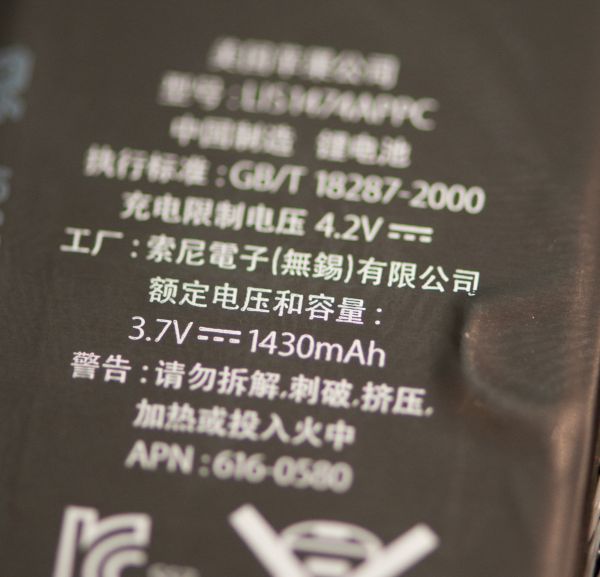
Battery capacity up to 1430 mAh
The other subtle change is an extremely small jump in battery capacity, from 1420 mAh in the 4 to 1430 mAh in the 4S. This is a very small change that boosts the capacity in watt-hours from 5.25 to 5.3. In addition the 4S puts on a little bit of weight, from 137 to 140 grams, but again nothing major.
Even the 4S packaging is basically the same as prior versions, including the same design and contents. Inside you get the phone, dock cable, headset mic, and the same smaller 5V, 1A charger that came with the 4.
| Physical Comparison | |||||||
| Apple iPhone 4 | Apple iPhone 4S | HTC Sensation | Samsung Galaxy Nexus | Samsung Galaxy S 2 | |||
| Height | 115.2 mm (4.5") | 115.2 mm (4.5") | 126.3 mm (4.97") | 135.5 mm | 125.3 mm (4.93") | ||
| Width | 58.6 mm (2.31") | 58.6 mm (2.31") | 65.5 mm (2.58") | 67.9 mm | 66.1 mm (2.60") | ||
| Depth | 9.3 mm ( 0.37") | 9.3 mm ( 0.37") | 11.6 mm (0.46") | 8.94 mm | 8.49 mm (0.33") | ||
| Weight | 137 g (4.8 oz) | 140 g (4.9 oz) | 148 g (5.22 oz) | 135 g | 115 g (4.06 oz) | ||
| CPU | Apple A4 @ ~800MHz Cortex A8 | Apple A5 @ ~800MHz Dual Core Cortex A9 | 1.2 GHz Dual Core Snapdragon MSM8260 | 1.2 GHz TI OMAP 4460 Dual Core Cortex A9 | 1.2 GHz Exynos 4210 Dual Core Cortex A9 | ||
| GPU | PowerVR SGX 535 | PowerVR SGX 543MP2 | Adreno 220 | PowerVR SGX 540 | ARM Mali-400 | ||
| RAM | 512MB LPDDR1-400 | 512MB LPDDR2-800 | 768 MB LPDDR2 | 1GB LPDDR2 | 1 GB LPDDR2 | ||
| NAND | 16GB or 32GB integrated | 16GB, 32GB or 64GB integrated | 4 GB NAND with 8 GB microSD Class 4 preinstalled | 16GB or 32GB NAND integrated | 16 GB NAND with up to 32 GB microSD | ||
| Camera | 5MP with LED Flash + Front Facing Camera | 8MP with LED Flash + Front Facing Camera | 8 MP AF/Dual LED flash, VGA front facing | 5 MP AF with LED flash, 1.3MP front facing | 8 MP AF/LED flash, 2 MP front facing | ||
| Screen | 3.5" 640 x 960 LED backlit LCD | 3.5" 640 x 960 LED backlit LCD | 4.3" 960 x 540 S-LCD | 4.65" 1280 x 720 Super AMOLED | 4.27" 800 x 480 SAMOLED+ | ||
| Battery | Integrated 5.254Whr | Integrated 5.291Whr | Removable 5.62 Whr | Removable 6.475 Whr | Removable 6.11 Whr | ||


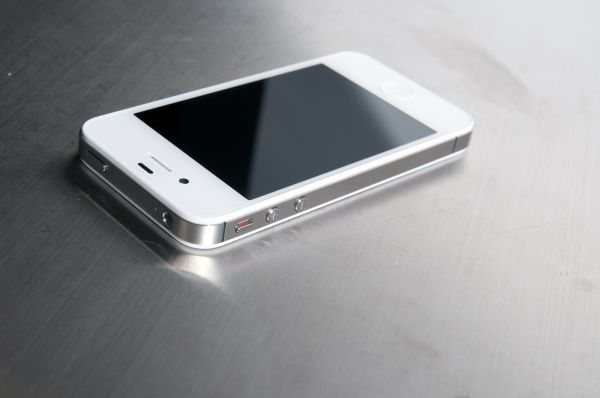

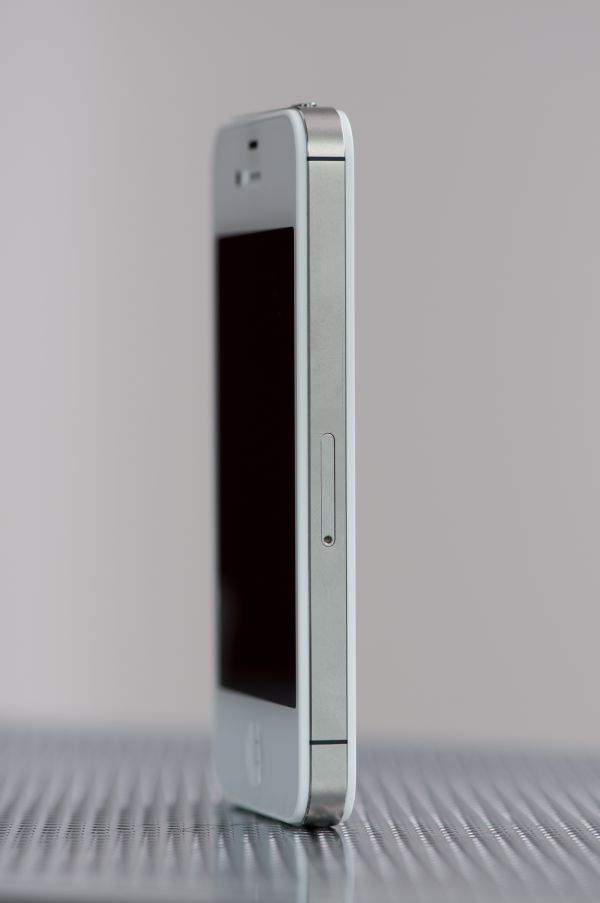














199 Comments
View All Comments
doobydoo - Friday, December 2, 2011 - link
Its still absolute nonsense to claim that the iPhone 4S can only use '2x' the power when it has available power of 7x.Not only does the iPhone 4s support wireless streaming to TV's, making performance very important, there are also games ALREADY out which require this kind of GPU in order to run fast on the superior resolution of the iPhone 4S.
Not only that, but you failed to take into account the typical life-cycle of iPhones - this phone has to be capable of performing well for around a year.
The bottom line is that Apple really got one over all Android manufacturers with the GPU in the iPhone 4S - it's the best there is, in any phone, full stop. Trying to turn that into a criticism is outrageous.
PeteH - Tuesday, November 1, 2011 - link
Actually it is about the architecture. How GPU performance scales with size is in large part dictated by the GPU architecture, and Imagination's architecture scales better than the other solutions.loganin - Tuesday, November 1, 2011 - link
And I showed it above Apple's chip isn't larger than Samsung's.PeteH - Tuesday, November 1, 2011 - link
But chip size isn't relevant, only GPU size is.All I'm pointing out is that not all GPU architectures scale equivalently with size.
loganin - Tuesday, November 1, 2011 - link
But you're comparing two different architectures here, not two carrying the same architecture so the scalability doesn't really matter. Also is Samsung's GPU significantly smaller than A5's?Now we've discussed back and forth about nothing, you can see the problem with Lucian's argument. It was simply an attempt to make Apple look bad and the technical correctness didn't really matter.
PeteH - Tuesday, November 1, 2011 - link
What I'm saying is that Lucian's assertion, that the A5's GPU is faster because it's bigger, ignores the fact that not all GPU architectures scale the same way with size. A GPU of the same size but with a different architecture would have worse performance because of this.Put simply architecture matters. You can't just throw silicon at a performance problem to fix it.
metafor - Tuesday, November 1, 2011 - link
Well, you can. But it might be more efficient not to. At least with GPU's, putting two in there will pretty much double your performance on GPU-limited tasks.This is true of desktops (SLI) as well as mobile.
Certain architectures are more area-efficient. But the point is, if all you care about is performance and can eat the die-area, you can just shove another GPU in there.
The same can't be said of CPU tasks, for example.
PeteH - Tuesday, November 1, 2011 - link
I should have been clearer. You can always throw area at the problem, but the architecture dictates how much area is needed to add the desired performance, even on GPUs.Compare the GeForce and the SGX architectures. The GeForce provides an equal number of vertex and pixel shader cores, and thus can only achieve theoretical maximum performance if it gets an even mix of vertex and pixel shader operations. The SGX on the other hand provides general purpose cores that work can do either vertex or pixel shader operations.
This means that as the SGX adds cores it's performance scales linearly under all scenarios, while the GeForce (which adds a vertex and a pixel shader core as a pair) gains only half the benefit under some conditions. Put simply, if a GeForce core is limited by the number of pixel shader cores available, the addition of a vertex shader core adds no benefit.
Throwing enough core pairs onto silicon will give you the performance you need, but not as efficiently as general purpose cores would. Of course a general purpose core architecture will be bigger, but that's a separate discussion.
metafor - Tuesday, November 1, 2011 - link
I think you need to check your math. If you double the number of cores in a Geforce, you'll still gain 2x the relative performance.Double is a multiplier, not an adder.
If a task was vertex-shader bound before, doubling the number of vertex-shaders (which comes with doubling the number of cores) will improve performance by 100%.
Of course, in the case of 543MP2, we're not just talking about doubling computational cores.
It's literally 2 GPU's (I don't think much is shared, maybe the various caches).
Think SLI but on silicon.
If you put 2 Geforce GPU's on a single die, the effect will be the same: double the performance for double the area.
Architecture dictates the perf/GPU. That doesn't mean you can't simply double it at any time to get double the performance.
PeteH - Tuesday, November 1, 2011 - link
But I'm not talking about relative performance, I'm talking about performance per unit area added. When bound by one operation adding a core that supports a different operation is wasted space.So yes, doubling space always doubles relative performance, but adding 20 square millimeters means different things to the performance of different architectures.